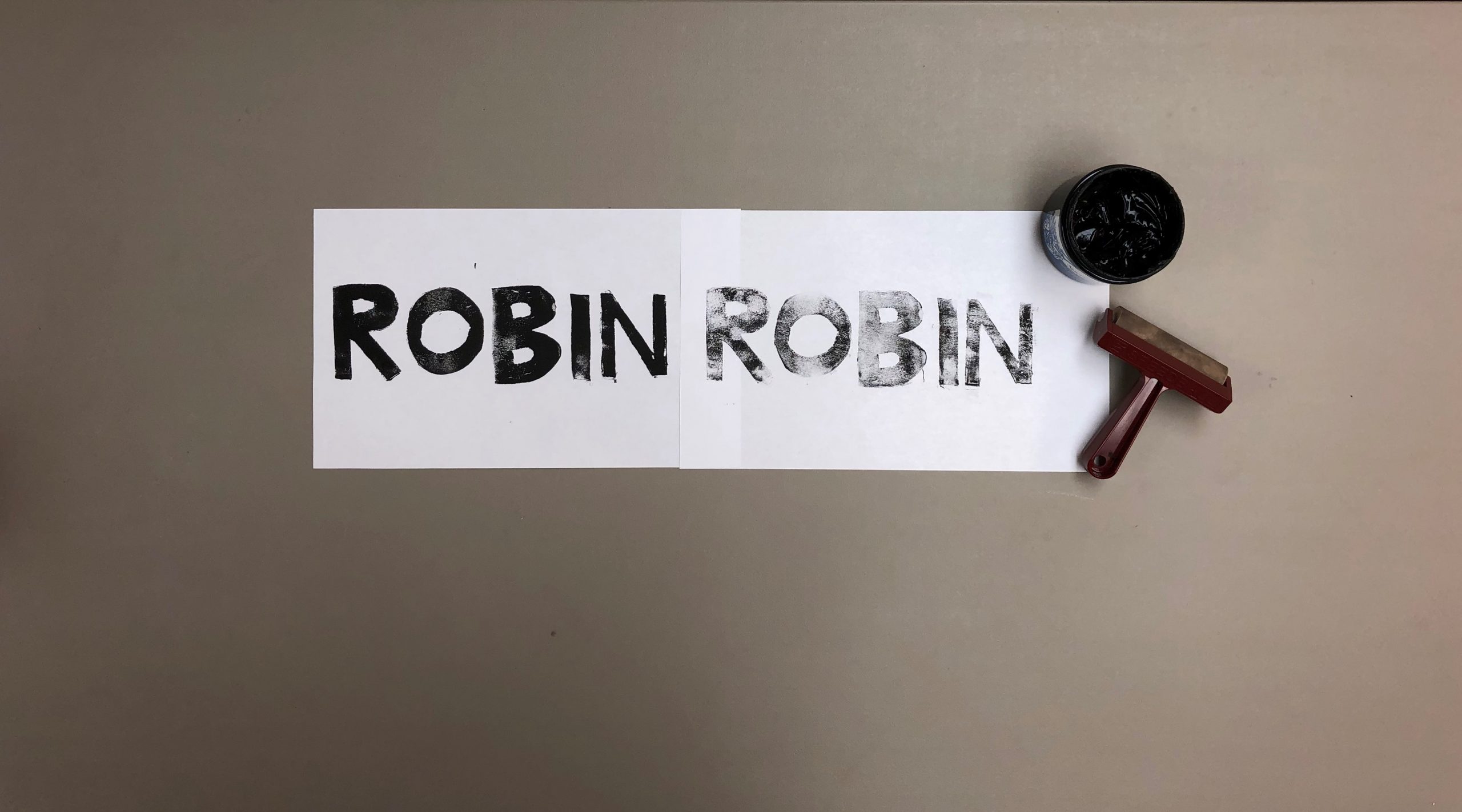This week I printed a 5-letter word using potato stamps. I have been exposed to the art of printmaking, which is very similar to the art of letterpress technology. Printmaking is the art of etching an image into something and transferring the image to paper or fabric. I didn’t find the task challenging as I had access to printmaking supplies including ink, ink plate, roller, and knives for cutting and shaping the potatoes. I actually found using a potato was much easier to manipulate than using lino, which is what I’ve used for etching and transferring images in the past.
It took me about 2 hours from start to finish to cut and etch my potatoes, roll the ink, and transfer the cuts to paper. As we learned from Paul Collier who runs the printing press at the University of Plymouth this week, letter press technology requires a degree of consideration. This is because there is no quick way to fix a mistake. I understood that my letters had to be etched backwards in order for them to transfer so they could be read. I was careful to plan out my cuts, as again, I knew that once a cut was made, in order to fix it, I would have to start again.
My letters are pretty symmetrical but they are not perfect. I’m not sure that I would ever pick my “font” when designing the layout of a printed document. The ink that I rolled on transferred to the paper better on the first stamp compared to the second stamp.
As I was completing this task, I thought how time consuming it would be to prepare a sentence or a paragraph. The mechanics and engineering involved in mass printing documents 500 years ago is impressive. Technology has advanced into word processing and design software, that allows us to fix a mistake quicker than ever before.

Hi Robin,
I also had experience doing printmaking in the past, but forgot the cardinal rule that things come out backwards when printing. I carved my potato letter in the correct direction and had to use a mirror to as a cheat to correct the text direction. I also remember from my printmaking course that the preparation is about 90% of the art form, while the application of stamp to paper is pretty much instantaneous. I agree the time consumption of type setting 500 years ago must have been painstaking.
Thanks for sharing your experience.
Shawn
Hi Shawn!
Thanks for visiting my page!
I checked out your page and I too was trying to think of a five letter word with straight lines that would be easy to cut! I like the mirrored image… it is very artsy!
Robin
Hi Robin,
Your observation of the permanency of the potato print stood out to me: “This is because there is no quick way to fix a mistake.”
I chose to do the handwriting task, but now that I think about it, changing my writing utensil can help with “correcting” mistakes, but there are only so many times you can do this before the paper gets ruined.
At the same time, paper is seen as more disposable in our current times, so fixing my handwriting mistakes would be more okay than having a costly error for mechanization. Errors in handwriting might also be perceived as adding character, which errors in mechanization might be too erroneous and detracting of the reading experience (due to repetition).